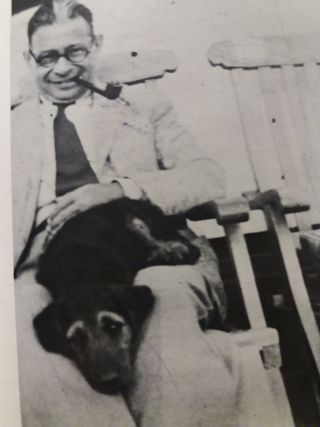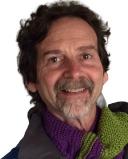Psychoanalysis
Recasting Psychoanalysis in Existential Terms
The lasting legacy of Otto Rank.
Updated November 17, 2023 Reviewed by Lybi Ma
Key points
- The neglected existential-humanistic therapeutic approach of the psychoanalyst Otto Rank.
- What is our relationship to existence above and beyond our relationship to our biology and culture?
- Addressing our groundlessness and helplessness beginning at birth.
- Skills like presence can address preverbal-kinesthetic aspects of our struggles and liberation.
I think the most important point that Otto Rank has taught us is that by dint of birth we all (to a greater or lesser degree) have a “groundlessness and helplessness” problem. You can see this problem all around us, mainly in the form of defenses. In our routinized and mechanized lifestyles, in our relentless patriarchy and power mongering, in our pernicious tribalism and exceptionalism, in our bigotry and prejudice, in our yen for religious dogma, in our entrancement with fanatics and ideologues, in our obsession with fashion and status, in our desperation for withdrawal and avoidance—as happens in depression and anxiety disorders, obsessive-compulsiveness, addiction, and dissociation—in our hostile outbursts at home or at work. And in all the ways, large and small, that we avoid standing out in this world as whole, flawed, and transcendent human beings.

The second most important point Rank taught us, also by dint of birth (and in greater or lesser degree), is that we all have a liberation problem, or better said, a liberation opportunity. This opportunity manifests in every one of the degradations and imprisonments I just mentioned, in every one of our defenses against groundlessness and helplessness, if we could but gain the tools and equipment to work with that groundlessness and helplessness. The result could be that many of our destructive immortality projects, or polarized minds—fixations on single points of view to the utter exclusion of competing points of view—could become vital minds and hearts, evolving and awe-based psyches that convert terror and overwhelm into wonder and discovery, greater possibilities, discernment, co-existence, and love. This would manifest (again, in more or less degrees) as a love for life and those engaged in our lives, a passion to learn about and understand that life, and a yearning to better that life through what Rank calls a creative will. Finally, it would free us to experience the riches of connecting with the depth and vastness of that life, “beyond psychology” (as it’s conventionally defined) to an expanded spirituality that informs and elevates all that we do and are.
Now, let’s get to how, more specifically, Rank recast psychoanalysis and if legitimized in his time—which he was not—just might have advanced the field by a hundred years, as the Rank scholar Robert Kramer (personal communication) has proposed.
Rank gifted us with a whole new language for psychoanalysis. It is a language of cosmic rather than strictly interpersonal scope. And it is a re-languaging of relationship. In Rank’s case, it is a re-languaging of our relationship to our biology and interpersonal matrix, to our relationship to existence, to the great mystery of being. Now although psychoanalysts like Winnicott, Bion, and more recently Robert Stolorow touch on this ontological relationship, much of contemporary psychoanalysis—including those three—appear to emphasize our relationship to the child-parent matrix as mediated through language. Although by no means discarding those critical relations in the development of the infant, Rank brings again, a much more cosmic or experiential context to the fore.
This is the realm of conscious and subconscious experience beneath the awakening to interpersonal relationships, and that forms the template for an existential unconscious. This realm is not conditioned so much by the personal biases of theoreticians or cultures but arguably, comprises our deepest dreads as well as most dazzling desires. In short, Rank describes our relation to the radically unknown; the realm of cosmos, creation, and infinity out of which we all emerge. This is precisely what Rank’s greatest expositor Ernest Becker meant when he called for a psychology with as few consolations as possible, that provides as stark a picture of the human situation as bearable, and that gets at the roots of our condition.
This is the existential quest in psychology: not to sidestep any of the basic problems of human engagement, neither within ourselves nor toward the world, but to face them head-on. What does this stark account look like?
I believe it translates very closely to what Rank described in his first major work The Trauma of Birth in 1924. That which Rank called the “trauma of birth,” and I describe as the “drama of birth,” because it has elements of wonder and not just terror, can be understood as the template for virtually all future functioning, both fragile and agile, small and great. It is a thesis that is both multi-cultural and multi-individual and that resists the biases of the theorist because it is a foundation that we all experience, we all carry throughout life. This perspective, which has become a sound theory, focuses on the shift from relative non-being and unity (not only within the mother’s womb but within the canopy of cosmos beyond the womb) to sudden, abrupt being and mayhem (or what Rank calls the irrational), and it is the template for virtually all future anxiety and trauma. But it is also the template for virtually all future wonder, discovery, and creativity if and this is the pivotal “if”—one can develop the tools or equipment to tap into that wondrous dimension rather than shrinking back from it and forming all kinds of defenses—both tyrannical and disintegrative, to skirt around it.
This is where analysts such as Winnicott and Kohut become so important, not only as illuminators of the child-parent matrix but illuminators—if we can stretch them—of the child-cosmos matrix. This would be represented by the huge question of how the child is met by the parental and cultural system—and by implication existential context—in their critical months and years. Are they met by a holding environment of support and understanding, love and validation, or all sorts of fear-based prejudices, hatreds, and projections toward that which is unknown, foreign, or different (both within the child and between the child and the world)?
Second, how is the child “held” when there is a rupture when that primal sense of groundlessness and helplessness—free fall—is reactivated by loss, illness, failure, or perceived rejection, abandonment, or devaluation? And can that meeting be transformed by what Kohut calls a “transmuting internalization” such that the caretaker models and the child internalizes a resilience in the face of even extreme peril or perceived peril?
Go to Part II
References
Note: This post is adapted from an invited talk for the first (to my knowledge) international conference on Rank titled "Unleashing Otto Rank: The Creation of Modern Depth Therapy" on November 4-5, 2023. The talk was sponsored by the Existential-Humanistic Institute with affiliate sponsors the University of Leuven, Belgium, the Existential-Humanistic Northwest, Portland, Oregon, and the Existential-Humanistic Institute Europe, Madrid, Spain. Speakers included Robert Kramer, Matthew Fox, Ellen Handler-Spitz, Marie Becker, Siebrecht Vanhooren, Ludwig Janus, Sara Ekenstierna, and Kirk Schneider. For more information about recordings of the conference, check for updates.
Kramer, R. (2019). The Birth of Relationship Therapy: Carl Rogers Meets Otto Rank. Psychozocial-Verlag.
Rank, O. (1924). The Trauma of Birth. Dover.
Rank O. (1941). Beyond Psychology. The Haddon Craftsmen.
Schneider, K. (2023). Life-Enhancing Anxiety: Key to a Sane World. University Professors Press.


